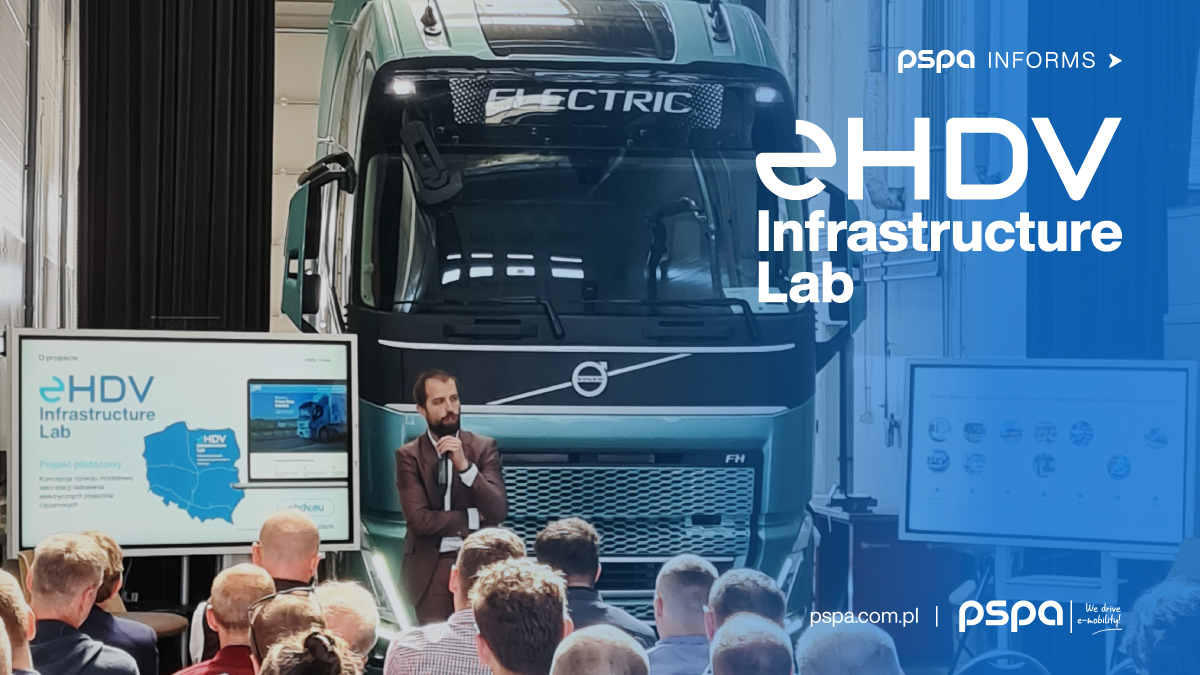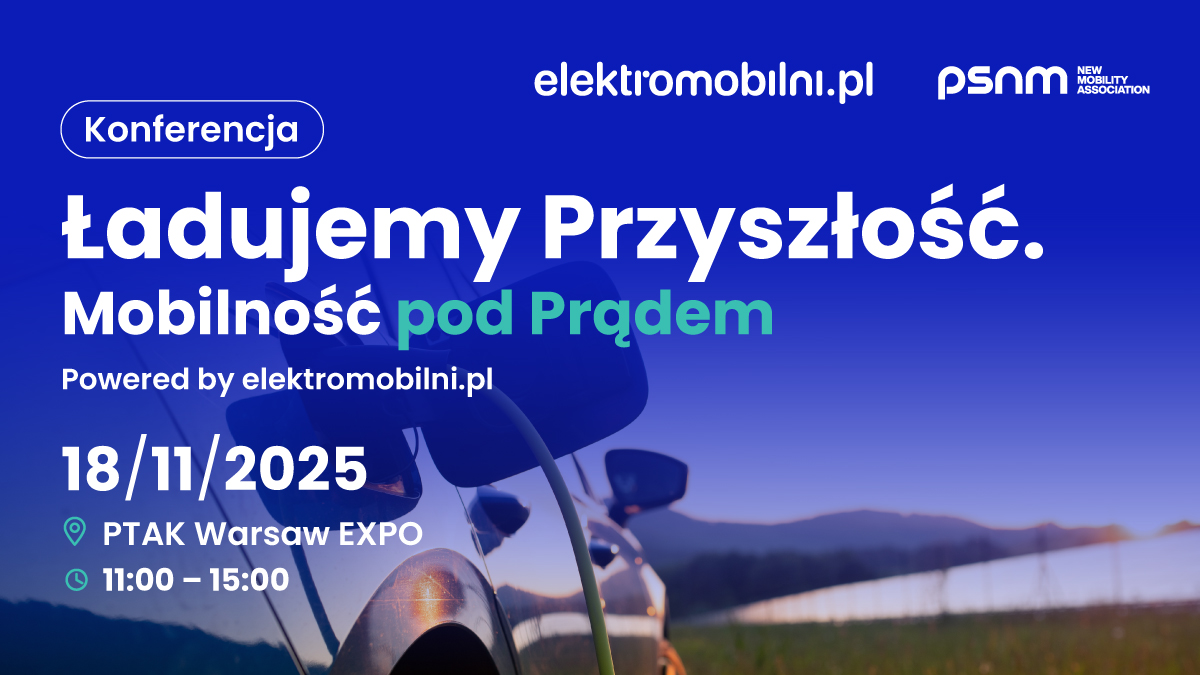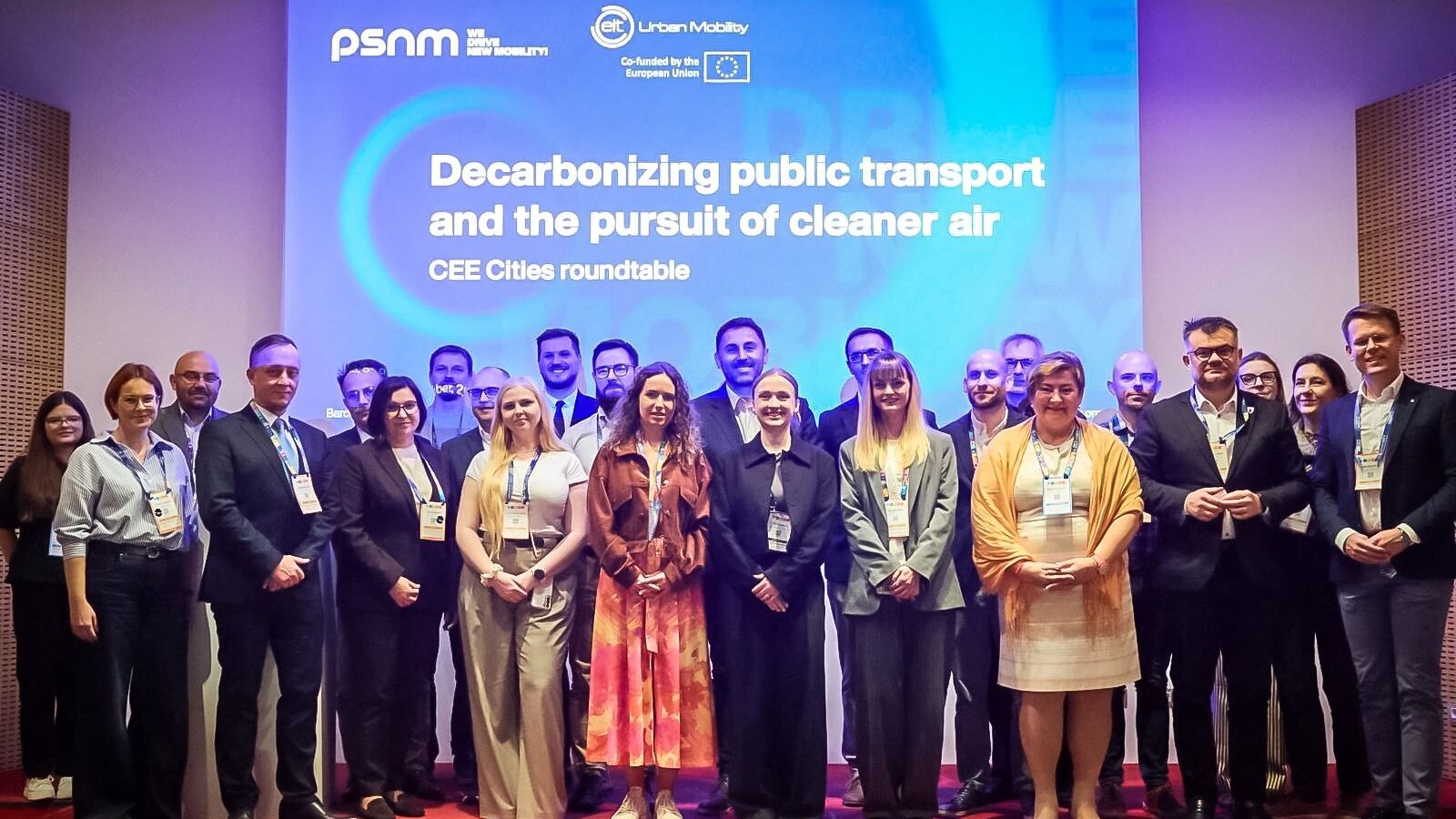The latest report by PSPA provides a roadmap to overcome the obstacles facing zero-emission heavy transport. It includes an innovative concept for a hub that charges electric trucks, identifies the most suitable locations for charging infrastructure along TEN-T routes, and recommends necessary legislative changes. This study is part of the “eHDV Infrastructure Lab” project, which aims to address the challenges faced by the heavy road transport sector in the context of e-mobility development.
The transport sector is one of the largest branches of the Polish economy. According to data from the Association of Employers “Transport and Logistics Poland”, there are 125,000 companies in this sector and they employ approx. 750,000 people. The TSL area (transport-freight forwarding-logistics) is strategically significant for the entire market, as it is an essential component of business activity. Eurostat analyses reveal that Polish companies alone transported almost 270 million tonnes of freight in 2018, accounting for 23% of EU road transport freight. In 2020 it was already 28%. However, the sizable truck fleet in the industry is also environmentally burdensome. Transport is responsible for more than 29% of EU carbon dioxide emissions and is currently one of the most carbon-intensive sectors in many Member States.
Transport in numbers
According to the European Automobile Manufacturers’ Association (ACEA), Poland has the highest number of registered trucks with a gross vehicle weight rating (GVWR) over 3.5 tonnes in the entire European Union, with 1,184,677 vehicle (6,230,283 vehicles in the entire Community). This means that every fifth heavy-duty vehicle on the roads of Europe is from Poland. Our country is the leading market and leader in heavy transport in Europe, handling almost one third of the EU freight transport.
On 14 August 2019, the European Union established its first-ever regulation to reduce carbon dioxide emissions from new heavy-duty vehicles, with targets of 15% by 2025 and 30% five years later. In light of the EU’s climate strategy, Poland is obliged to play an active role in electrifying this sector and expanding the charging infrastructure network.
Barriers
The pace of electrification of the heavy-duty vehicle fleet is still delayed by a series of market, financial, infrastructural, and power sector-related barriers. High prices, a limited supply of eHDVs, the absence of a support system for their purchase, and a shortage of charging stations dedicated to zero-emission trucks remain significant challenges.
– The European Union’s proposed AFIR regulation adds to the scale of these challenges. It will require all Member States, including Poland, to fulfil specific obligations regarding the development of charging infrastructure. Depending on the version of the draft regulation being prepared, AFIR’s implementation means that Poland may have to establish a network of eHDV charging stations of 26.3 MW to 179.2 MW by 2025 – says Piotr Ziółkowski.
Necessary changes
In order to address market challenges, PSPA has initiated the “eHDV Infrastructure Lab” project, which aims to create changes that will promote the development of the electric truck sector in Poland. The findings of the project have been compiled into a comprehensive report, which includes proposals for legislative changes that could be implemented in the country. The report also assesses the difficulty level of implementing each regulatory solution.
Additionally, as part of the “eHDV Infrastructure Lab” project, PSPA has developed a concept for a multi-station charging hub that can service trucks equipped with high-capacity traction batteries. The project includes the use of the MCS (MegaWatt Charging System) standard and assumptions arising from the proposed AFIR regulation. The future charging station will include stations with a minimum power of 50 kW for drivers who take a daily break, 350 kW stations for mandatory 45-minute charging during a 4.5-hour drive, and ultimately MCS stations (1 MW).
For the report, PSPA experts also identified routes that are part of the core TEN-T network (Trans-European Transport Network), where the development of charging infrastructure for electric trucks should take place first. Priority routes in terms of charging infrastructure development include the following: E40 (Zgorzelec – Katowice), E30 (Świecko – Warszawa) and E75 (Gdynia – Rzgów). These sections were selected as crucial for infrastructure expansion on the basis of analysis (based on a study conducted by the European Automobile Manufacturers’ Association (ACEA) in cooperation with Fraunhofer ISI) regarding regular truck stops throughout Europe, the volume of heavy goods traffic, as well as locations identified by market stakeholders as part of activities of the eHDV Infrastructure Lab project expert group.
The full version of the “eHDV Infrastructure Lab – feasibility report” is available on the website: Ehdv.eu


